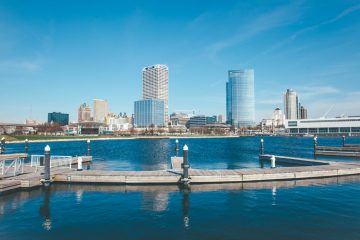An excellent piece by Michael McFadden on the creeping intrusion into Outdoor Recreational Smoking
Anyone who’s followed the War On Smokers over the last twenty years or so has seen the change from reasonable requests to accommodate people who disliked concentrated smoke in the air of places they were required to be, to a demand that smokers pretty much be exiled to a parking lot on the dark side of the moon.
1998 brought about the first huge leap from reason in that process when California banned smoking in all workplaces, including bars, that employed six or more people. It was followed about five years later by bar bans in Delaware and New York. A few years after that similar bans were brought to Nevada, Arkansas, and Ohio after a massive three state electoral push fueled by a multi-million dollar TV campaign. As of 2012 roughly half the states in the US have such far-reaching bans, often including even private clubs and casinos … despite clear and indisputably tremendous losses in gambling tax revenue.(1)
With the roll toward hospitality bans seemingly moving along on its own at this point, the antismoking juggernaut has turned its attention to the next step: doing something about the Smoker Problem outdoors. Using Mussolini’s "Slice The Freedom Salami" methods, they focused first on the pleasant outdoor patios that many establishments had created to retain their smoking clientele and maintain their businesses. Dining Antismokers looked out of restaurant windows and said, “Why should WE be locked up inside here while the smokers have all that fresh air and sunshine? Something MUST be done about this!"
Enter the push for outdoor smoking bans.
In some cases the antismoking lobbyists were able to push these bans forward purely on the basis of money, power, and carefully rigged surveys that supposedly showed “wide public support” for such bans. In other cases, where legislators proved to have a bit more backbone, antismoking researchers produced studies that tried to provide a scientific grounding for the bans. In reality, once one looks behind the headlines, one finds that the studies provide no such thing: generally all that’s demonstrated is that smoke does indeed exist outdoors and that we now have technology that can actually measure and quantify it in submicroscopic detail.(2) The science says nothing about any real threat to human health from the concentrations and durations of exposures involved, but the press-releases, headlines, and “authoritative statements” make up for the lack of science and outdoor bans have spread like a plague as they moved beyond patios to encompass public plazas, parks, and beaches. We’ve even seen the argument made that beach bans are justified on the basis of the “fire hazard” caused by smoking while sitting on a quadrillion tons of sand next to a sextillion liters of water.(3)
However there was another outdoor venue that the Antismokers were having a harder time with: bans throughout the grounds of university campuses. University students have the uncomfortable habit of wanting a bit more information than press-released headlines provide, and many of them had enough sense to realize that there was very little substance to any claims of a “health threat” existing from passing encounters with highly diluted outdoor smoke. The “Smoke Free Campuses” movement had millions of dollars behind it for “planning conferences” and glitzy sites and materials to push its agenda, but most universities still resisted the clarion call to “Clean Air.”(4)
So what could be done about bringing unruly and authority-resisting student populations into line? The answer was simple: just as with previous smoking ban efforts, money was the key. In the last few years, as the Smoke Free Campus movement has expanded its hold from under 300 up to almost 600 campuses they have “played the money card” and begun blackmailing universities: if the school wants millions of dollars in grant money they have to obey the new rules and agree to ban smoking everywhere.(5) At first, in order to tone down the protests, administrators will always emphasize the idea that the bans will be “self-enforcing” and that violators will simply be “offered” education and help if they want to quit smoking. Of course once the ban is in place and accepted as a de facto situation the velvet gloves come off and students face fines, probation, or even expulsion if they refuse to bend over and take it.
Is there *any* medical and scientific justification for such bans? No. They are purely and absolutely nothing more than social engineering: efforts to treat the students like lab rats, “electro-shocking” them until they conform to the properly desired behavior patterns. Even if one accepts the Antismokers’ own figures on the threats of secondhand smoke exposure indoors, the threat from walking by smokers, even crowds of smokers on a regular basis near the doorways of buildings, is so small as to be outright laughable.
Even if one accepts the antismoking Bible, the EPA Report of 1992 on “Passive Smoking, as being factual, the risks of even concentrated indoor exposure to tobacco smoke are far smaller than most people believe. Antismokers will always emphasize the EPA claim of a 19% increase in lung cancer from such exposure while never mentioning two important points about that increase:
First, that it holds true only after 40 years or so of constant, daily exposure to the concentrated workplace smoking conditions of the 1950s through 1980s. And second, that it’s a 19% increase over a lifetime base rate of about four lung cancers in every thousand nonsmokers: i.e., an increase of one extra lung cancer per thousand who went through a lifetime of such intense daily exposure. (6) That works out to one extra cancer for every 40,000 worker-years.
Now a person’s exposure walking around a campus (or in a park for that matter), particularly if such exposure is something one has any concern about, is going to be on the order of about 1 minute per day instead of 8 hours (based on walking by concentrations of “doorway smokers" ten times a day at a leisurely six seconds per doorway). So those 40,000 years of eight-hour workdays would have to be multiplied by 8 hours × 60 minutes/hour to provide a total of one extra lung cancer on average for every 19,200,000 years of such exposure. But outdoor smoke is also likely to be far more diluted than the smoke exposure in those old work environments. If we accept a reasonable 90% dilution factor, then our 19 million years would grow to 190 million years. And, since colleges have about four months of vacation time built into their school year, the figure would expand by another third and grow to about 250 million student years to develop one extra lung cancer.
I’ve heard of perpetual grad students, but that’s stretching things a bit.
Outdoor smoking bans are generally unjustified in almost any setting. Outdoor smoking bans involving entire college campuses are nothing more than efforts at behavior control aimed at a population that is easily threatened and intimidated out of fear of losing their investments in their educations. They make as much sense, scientifically speaking, as smoking bans based on worries about setting the beaches and oceans on fire!
Michael J. McFadden
Author of "Dissecting Antismokers’ Brains"
References:
1) "The Lies Behind The Smoking Bans," p.19. http://kuneman.smokersclub.com/PASAN/StilettoGenv5h.pdf
2) http://wispofsmoke.net/satire.txt
3) “It’s Your Call with Lynn Doyle” Comcast CN8, 07/14/01 – Guests Gabrielle LeVecque and Regina Carlson
4) http://smokefreephilly.org/take-action/support-smoke-free-campuses/
5) http://www.dailytexanonline.com/news/2012/02/15/campus-smoking-ban-sparks-debate
6) “Respiratory Health Effects of Passive Smoking: Lung Cancer and Other Disorders” EPA Report, 1992



0 Comments